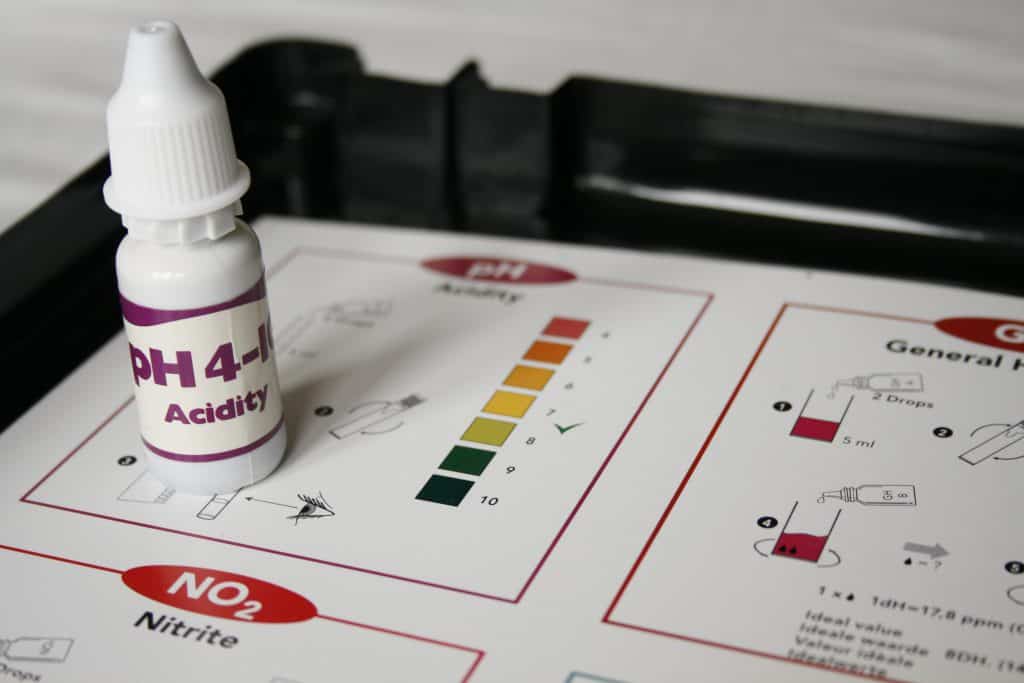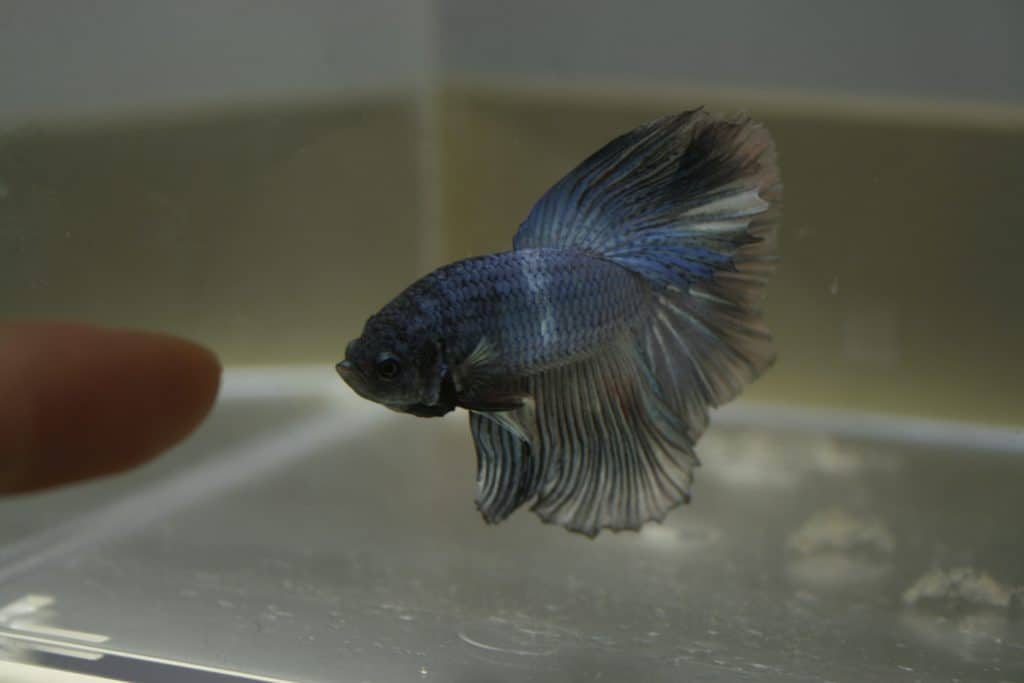This is a guest post by Adam of Betta Fish Center!
Water to bettas is like air to humans… so you can understand why the quality of your betta’s water is vitally important to betta fish care as it assists with keeping these pet fish not only healthy, but also content and happy in their aquatic environment.
When thinking about your betta’s tank, here are three important elements to keep in mind:
- Water temperature
- pH levels
- Chemical levels
Water Temperature
The ideal aquarium size for your new betta would be a 5-gallon tank; however, if you are planning to add house mates, start with a 10-gallon tank – this will allow for some growing room.
Bettas like their home to be warm and cozy, so keeping the water temperature between 75° to 82° degrees Fahrenheit is ideal.
Also, change about 20-25% of the tank water once a week as a preventative measure to ensure your tank remains clean. When adding the new water, make sure the temperature is the same as the tank water to avoid any sharp temperature fluctuations that could harm your fish.
Tip: Drastic changes in water condition levels are hazardous to your fish’s health. Even if the water temperature is slightly warmer than you would like, your fish will be happier in this scenario than if you drastically changed it to a more ideal temperature. Keep any changes slow and controlled.
pH Levels
About 24 hours prior to introducing your new little fella into his home, conduct a pH level test. The pH levels can range from 0 (the most acidic) to 14 (the most alkaline) with 7 being neutral. The betta’s tank is best at about 6.5 to neutral, but remember to avoid any sharp fluctuations in pH.
When looking for compatible house mates for your betta, check that these pH levels are good for them as well.
You will need to check the pH levels once a week and if adjustments need to be made, pH kits are normally available at the pet store where you purchased your betta.

Chemical Levels
One of the important elements to maintaining the right chemical levels of your betta’s home is the nitrogen cycle. If you have a filtration system in your tank and you are changing the water once a week, you are already conducting a nitrogen cycle and probably not even aware you were doing so. How easy is that!
However, cycling properly is a little more involved. Cycling is the act of introducing “good bacteria” into your aquarium and disposing of common waste products produced by your betta and his tank mates.
Many aquarium owners choose to cycle through their tank before introducing fish. This is a personal decision and I urge you to research this further with your local fish dealer. I have had good luck cycling with fish in the tank as long as they are hardy and healthy, but cycling the water prior is a good habit to adopt.
The cycling process can take up to a month to complete successfully. Throughout the process, you will notice nitrates, nitrites, and ammonia levels fluctuating. Fortunately, bacteria will help to transform the ammonia from waste into nitrites. It’s quite the nice balancing act for bacteria, and once a cycle is complete the ammonia should read 0 ppm, nitrites should also read at 0 ppm and nitrates between 5-10ppm.
The important thing to remember during the cycling process is to test the water, and then test again. In fact, frequent testing is essential for a successful cycling process. When cycling with fish in the tank, should levels become dangerous, the betta and tank mates may only live for a short period of time. Therefore, it’s vitally important to have all of the necessary add-ins and testing supplies so you can complete the cycling process successfully.
Ongoing Cycling
Remember that your betta’s home is also the place he excretes waste, so once a week you should test the water after changing it to ensure the cycle is continuing. It’s an important step to keeping your betta’s home a healthy environment. The chemicals listed below can be tested regularly although Nitrate and pH are the most important:
- Ammonia
- Calcium
- Carbonate
- Iron
- Nitrate
- Nitrite
- pH Level
Helpful Tips:
For quick cycling – moss balls are good for absorbing ammonia and nitrate, but the tank will still need to be tested and 20-25% of the water changed once a week.
Indian Almond leaves can also act as a slow acid buffer to keep pH levels stable in the tank.
Some betta owners will add Indian Almond Leaves to the tank because they have been known to act as immune boosters as well.
There is no scientific study that indicates Almond leaves are the “end-all-be-all” to what may ale your little fella; however, many betta owners use the leaves as a way to:
- promote spawning
- fight bacterial and fungal infections
- assist with pH levels
Add about one almond leaf per 10 gallons of water.
Happy Betta Keeping!
Adam Short is the proud owner of Betta Fish Center, an educational betta fish care resource for betta owners looking for information on how to keep their fish happy and healthy. The site includes free articles, videos, user-submitted gallery images and a betta forum where members can interact and ask questions.


















Honestly I wish I had seen this post sooner just for the tip on avoiding drastic change. My tank has tended twords higher than recommend ph since day 1, but in my attempts to fix it intended up harming my first Betta.
Hi Sam,
Yes, pH is one of the most important water parameters. pH swings can quickly devastate a tank. It may be a good idea to test the pH of your source water (for yourself and for your fish). Other than that, make sure that your substrate/filter media aren’t pH buffers. Household aerosol cans and other cleaning products can also affect your tank if used in close proximity.
pH will also change slightly throughout the day, but these are normal fluctuations; anything great than a 1.0 difference, I would be concerned.
Hopefully you can get to the bottom of this and learn for next time!